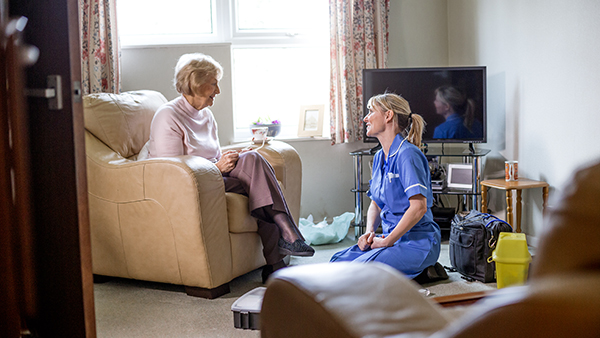Author of a new book about the development of Sure Start, Naomi Eisenstadt FRSA argues that its story is an ideal case study on how to deliver services for young children and on the policymaking process.
Early in the Blair government, two features emerged as key to how the policy process was changing. The Modernising Government Agenda described some fundamental characteristics of the new policy process: policies would be user, not provider led, based on clear evidence, designed around outcomes not inputs, and involving experts from outside of government.
From the Treasury came the Comprehensive Spending Review process; instead of allocating budgets annually to each department, the Treasury would manage a process every two years and allocate funding on a three-year basis, to enable longer-term planning and budget stability. In exchange, each department would have to sign up to quantifiable outcome measures in the form of a Public Service Agreement. The aim was clarity and transparency on what the government was meant to deliver for taxpayers’ money. At the same time, a small number of cross cutting reviews were carried out. One, the Comprehensive Spending Review on Services for Children Under Eight, resulted in the creation of Sure Start.
The review made three key conclusions. First, that poverty is bad for children: those from poorer backgrounds did less well at school than their better off peers, were more likely to be unemployed as adults, experienced more health problems, and were more likely to become parents while still in their teens. Second, that most of the public expenditure on young children was on those of school age. What services there were for pre-school children were geographically patchy and of mixed quality. Third, it concluded that the right kind of services, aimed at both parents and children, delivered before school age, could narrow the gap in outcomes between poor children and the rest.
Sure Start was announced in Parliament in July 1998. The initial plan was for 250 programmes to be established in the poorest neighbourhoods in England. Each programme area would include about 600-800 children and services would be available to all children under four in the area. The initial budget allocation was £450 million over three years. Each programme was encouraged to develop its own range of activities, but had to show they contributed to a defined set of public service agreement targets.
Sure Start was highly innovative in its governance arrangements. At Whitehall level there was joint accountability across the Departments of Education and Health to begin with, and later joint accountability across the Departments of Education and Work and Pensions. At the local level, partnership boards were established including local parents and the key public and voluntary agencies involved with young children. This involvement of local parents was strongly emphasised along with the importance of creating a seamless service offer.
A number of key debates characterise the life of Sure Start, some of which still resonate. The programme design was strongly supported by most of the organisations running services for young children. However, it was fiercely opposed by many academics whose view was that it would be impossible to rigorously evaluate a bottom up process where localities decided what a local programme would deliver. The next key debate was on the evaluation, and in particular the decision not to have a randomised control trial. The rejection of this type of evaluation was in part because the design did not lend itself to this approach but also because ministers would not agree to denying a random group of children a service that they felt sure would work. My view now is that the fundamental design owed more to the modernising agenda than to the available evidence of what works. None-the-less, the design was fundamentally strong and was revised as evaluation evidence emerged.
The third big debate was about the rapid expansion of the programme before any evidence of efficacy was available. Ministers argued for the expansion and most civil servants argued against. On this issue, my retrospective view is that the ministers were right and the officials were wrong. Had the rapid expansion not taken place, Sure Start would not exist today; it is only because it became part of the universal service offer, that it is now very difficult to take away.
The fourth significant debate was about the decision to emphasise the importance of employment for parents of young children. Some ministers were deeply uncomfortable with this move from a programme about nurture and community development, to one supporting welfare to work and anti-poverty goals. Yvette Cooper was the key driver in this shift, as was Margaret Hodge, who was rightly concerned that at least some of the Sure Start funding should support increased childcare.
The handover of control to local authorities was also very contentious. There were two main concerns and both turned out to be legitimate: funding would be spread much more thinly and parents would lose the limited role they had gained in governance. Certainly, the recent removal of the ring fence on funding for early years services has considerably reduced the funding available.
However, the current government is interested in returning control of Sure Start children’s centres to parents. This issue is related to the final of the big debates that mark Sure Start’s history: who the programme is for. The original intention was to target the poorest 30% of children; the expansion created a network of children’s centres designed for all children, and the government is anxious that Sure Start reaches the neediest children. Community control and targeting the most disadvantaged do not sit well together; local communities, often with good reason tend to exclude the most disadvantaged.
Mistakes were made on the road to developing over 3,500 Sure Start centres. The most serious was a failure to recognise the complexity of the task required of local programme managers and then children’s centre leaders, and therefore a failure to put in place a development programme and a performance management system. In part this was a consequence of the rapid expansion. A related failure was the lack of understanding about how long it would take to get programmes up and running. Community participation is a slow and arduous process, and commissioning new buildings is time consuming and complex. The cross government arrangements proved cumbersome and encouraged unrealistic expectations; every minister wanted something different from the programme, and believed it could deliver everything.
But a huge amount has been achieved. Most significantly was the all party agreement that government has a role to play in supporting children and families after the birth and before school. A publicly funded universal service is in place for all three and four year olds, maternity and paternity leave has been greatly increased, and children’s centres, while under threat in some areas, are proving safe in many others.
Sure Start provides important lessons. Frequent changes of ministers can support innovation but can also cause confusion as to core purpose and a loss of momentum. Implementation is always harder and takes longer than anyone anticipates. But perhaps the most important lesson is the acknowledgement that making policy is messy; as much based on gut instincts and the values of ministers, as on scientific evidence. Ultimately it was political will that transformed early years services in Britain.
Naomi Eisenstadt has a long history of working in social policy, mainly in children’s services and was Director of Sure Start between 1999 - 2006. This article is taken from Providing a Sure Start, how government discovered early childhood, published by Policy Press. She spoke at the RSA - listen to the audio of her lecture.
Related articles
-
Care… the work that makes all other work possible
Richard Humphries
Most of us will need care at some point in our ever-longer lives. Richard Humphries argues that it’s time we recognised its importance and legislated and funded it properly
-
An idea worth stealing
Edward Lowe
Watching how software engineers work could revolutionise how we build products and services, and give employees more interesting and fulfilling work. Edward Lowe talks Tesla, Henry Ford and a lesson from the slaughterhouse
-
Local government transformation and change challenges post-Covid-19
Ian Burbidge
How are local government transformation and change leaders balancing short-term concerns with long-term challenges?



Be the first to write a comment
Comments
Please login to post a comment or reply
Don't have an account? Click here to register.